
Number plates are a regulated product with rules that must be followed. What are the rules for displaying number plates, and do yours comply? Find out what makes a road legal number plate below.
Road legal number plates
What makes a road legal number plate? In short: black characters (whether 3D/4D or printed) that match the size, margin, stroke thickness, and character grouping specs of the regulations. The plate background must be reflective. They must show the supplier’s name & postcode. Also displayed in the lower right-hand corner should be the component maker & British standard markings. The flag (if displayed) can also be accompanied by its respective country code. Borders (if displayed) must be a solid colour, and be no wider than 5 mm in width.
Number plate regulations
Number plates are regulated under The Road Vehicles (Display of Registration Marks) Regulations 2001, and the British standard. For such a simple product, there’s a myriad of rules to comply with. Most of them are of no interest to every day readers, so I’ll only cover the “visible” ones that regulate how a plate can appear on the outside, not the “invisible” ones that regulate materials and technical properties.
1. Font / characters
A road legal number plate must meet several font requirements, so there are a few rules to cover here:
- Character colour
- Size
- Margins
- Stroke thickness
- Character grouping
Character colour
The letters and numbers of your number plate must be a single shade of black. Additionally, this does include the front and side faces for 4D number plates.
It is no longer legal to add highlights to the characters by using different shades of black, for example to create a 3D-effect.
Size
Each character must be 79 mm in height and 50 mm in width for cars. For motorcycles, it’s 64 mm in height and 44 mm in width.
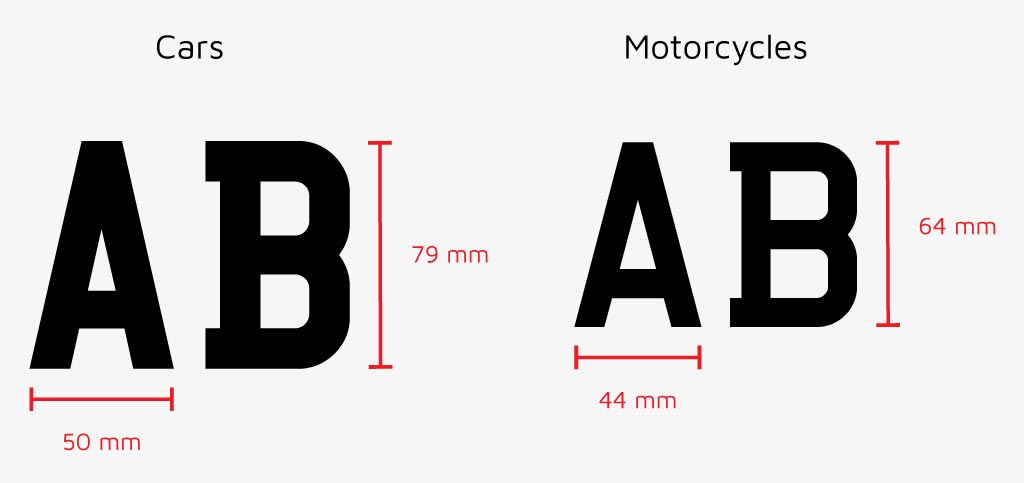
Character margins
Characters on a car plate must have an 11 mm margin. For motorcycles, it’s 10 mm. The margin also applies to the outside of the characters. No other marking such as a border, flag, or legal markings may encroach on the margin area. Further, the margin between the two character groups is 33 mm.
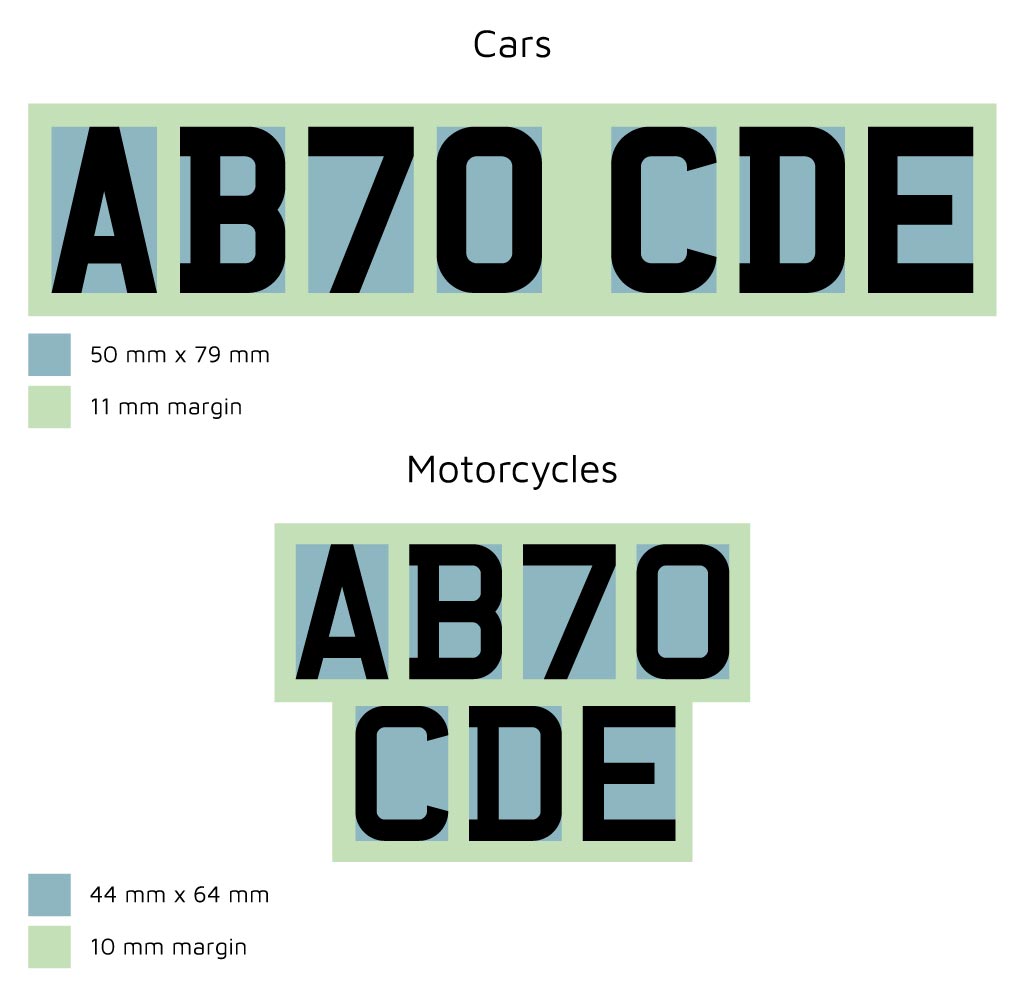
Stroke thickness
The number plate font (Charles Wright) has a stroke width (that’s the thickness of the lines) of 14 mm. Because motorcycle plates are smaller, the stroke thickness reduces to 10 mm for bike plates.
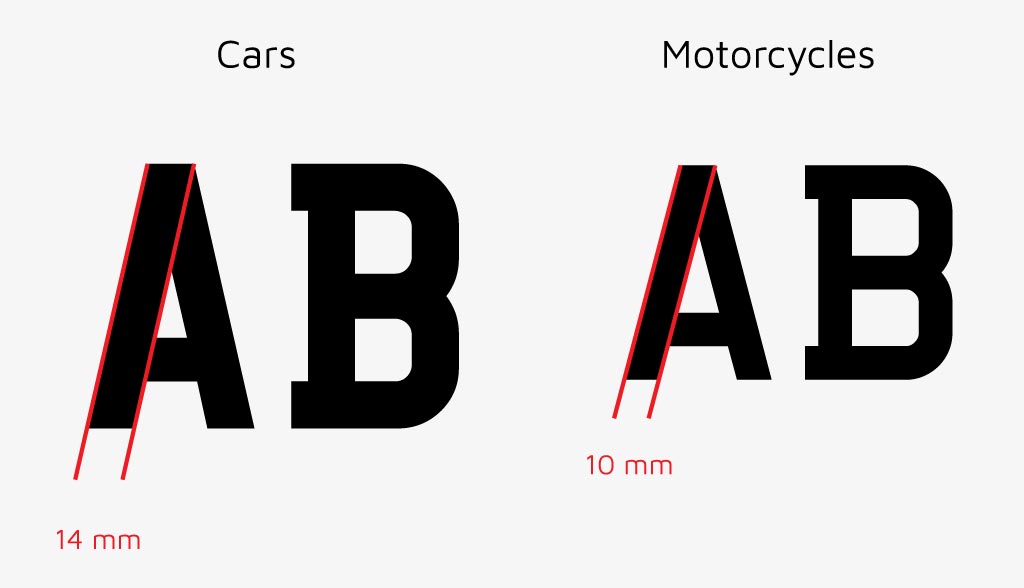
Character grouping
The format for registration numbers is 2 letters, 2 numbers, and 3 random letters. The first part of the registration never contains the letters Q, I, or Z. The 3 random letters also never use Q or I.
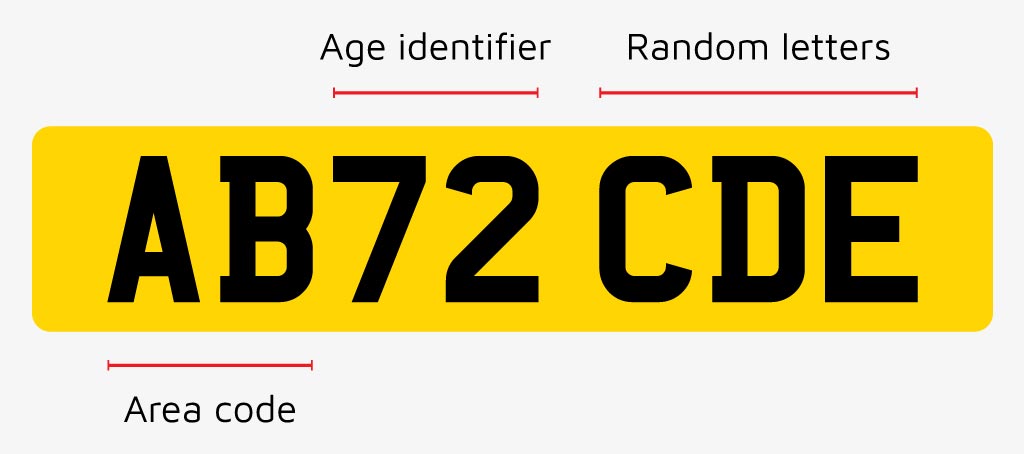
2. Reflective background
The plate background must be reflective. The rear plate should be yellow (but the exact hue is not regulated), and the front plate should be white.
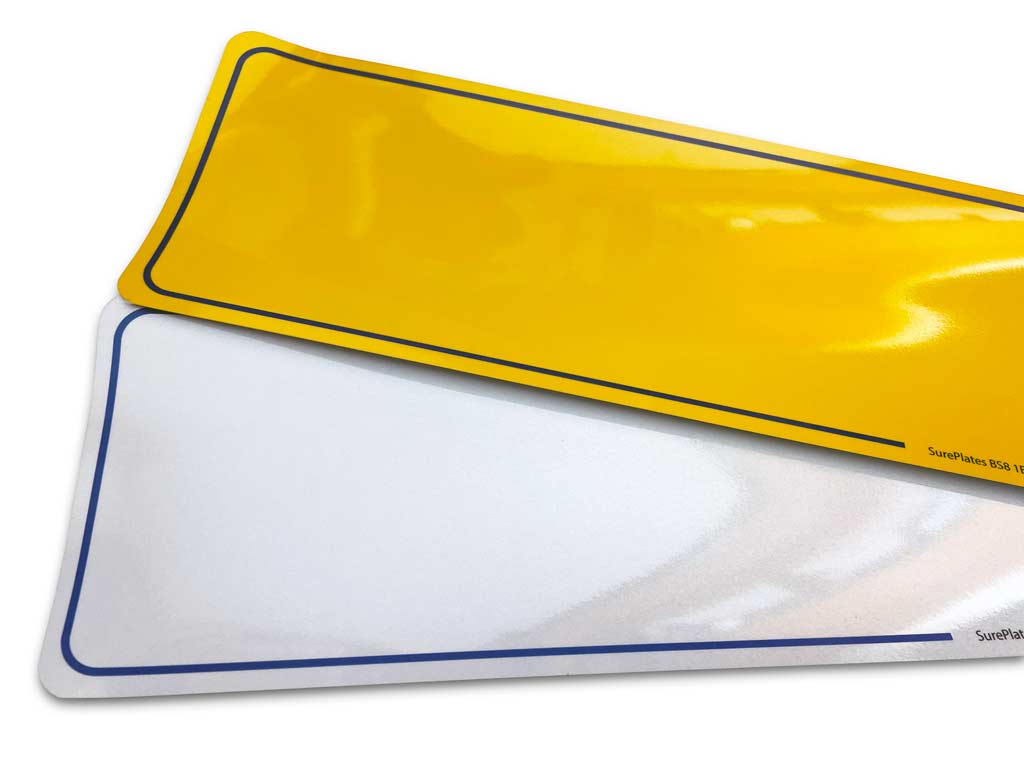
3. Legal markings
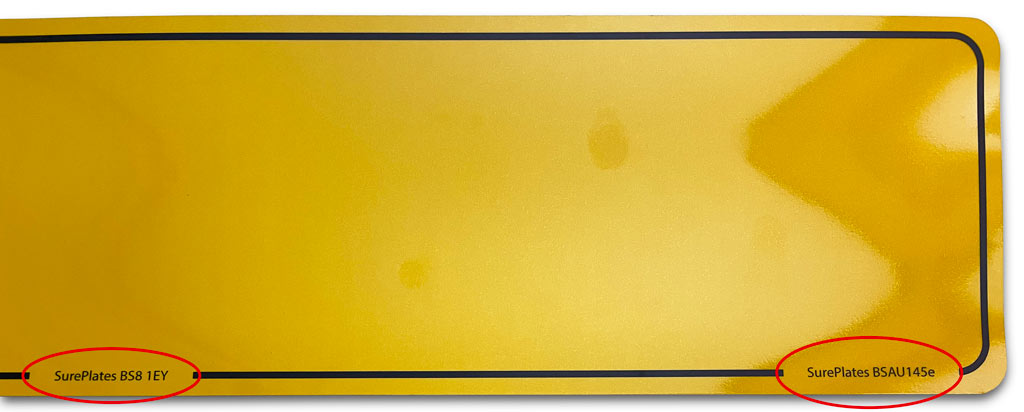
Number plates must show the supplier’s name & postcode in the bottom centre of the plate. Also, the component manufacturer (or plate supplier) and the current British standard must be displayed in the lower right-hand corner.
4. Flags & borders
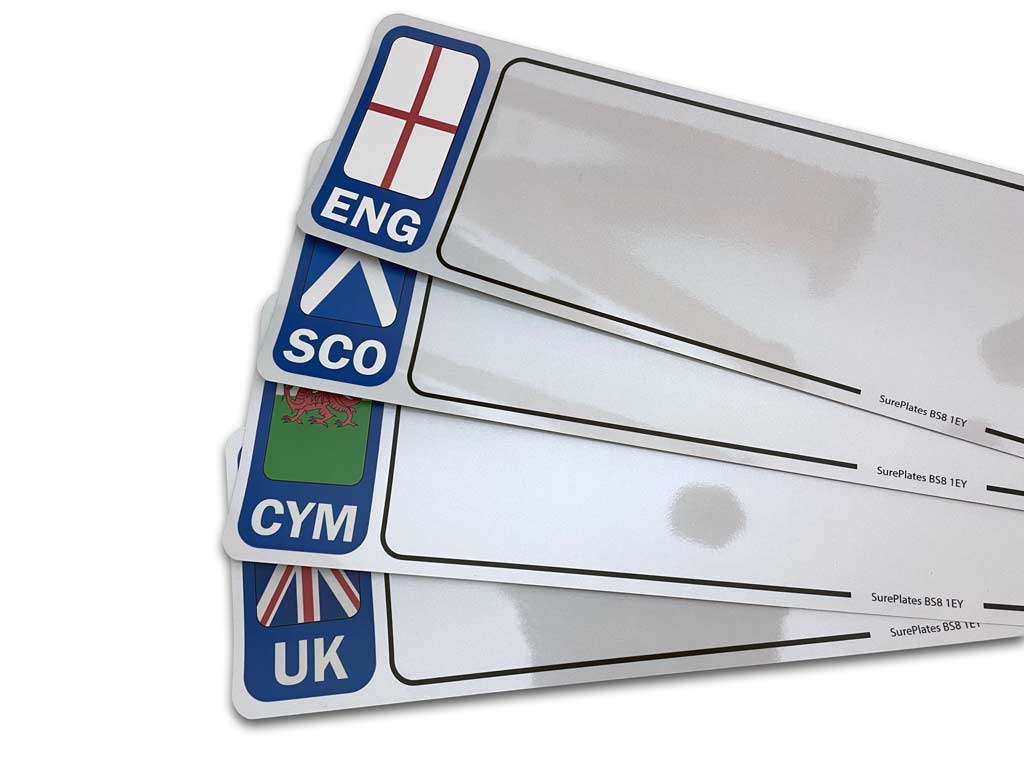
If displaying a flag, it must be 50 mm in width or less. Eligible flags include:
- The Union flag (UK)
- St. George’s Cross (England)
- St. Andrews’s Saltire (Scotland)
- The Red Dragon of Wales (Wales)
You may display a country code underneath the flag. Eligible country codes for each flag include:
- UNITED KINGDOM, United Kingdom or UK
- GREAT BRITAIN, Great Britain or GB
- CYMRU, Cymru, CYM or Cym
- ENGLAND, England, ENG, Eng
- SCOTLAND, Scotland, SCO or Sco
- WALES or Wales
Summary of road legal number plates
Your number plates must display black characters on a white (front) or yellow (rear) background. Additionally, the digits must meet the exact size, margin, and character stroke requirements regulated in the British standard.
The number plates must be made of a reflective material, and must display the supplier details and current British standard markings.
The flag (if displayed) can be any of the 4 flags of the United Kingdom, and may display one of their respective country codes. Further, flags can be up to 50 mm in width. Borders can be up to 5 mm in thickness, and can be any opaque colour, as long as they are not reflective.